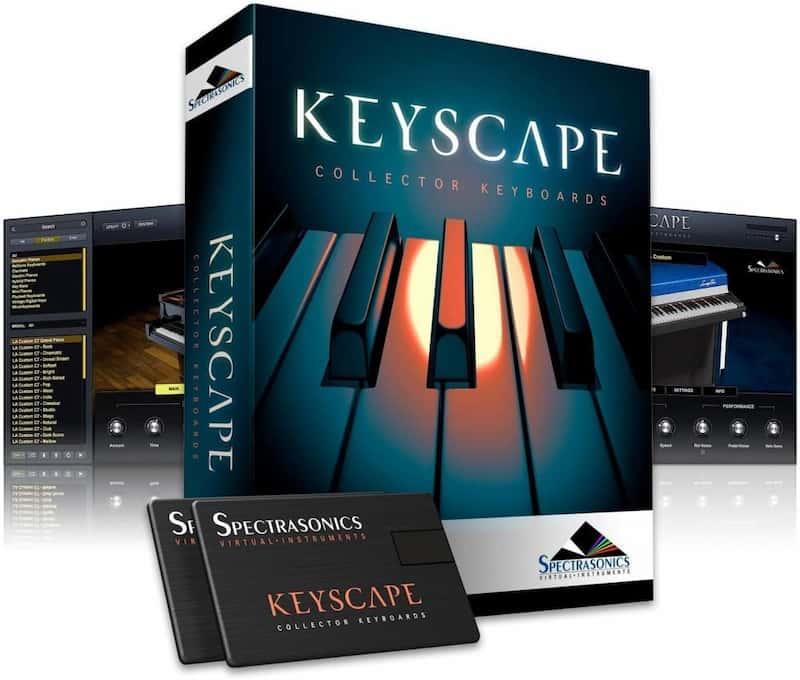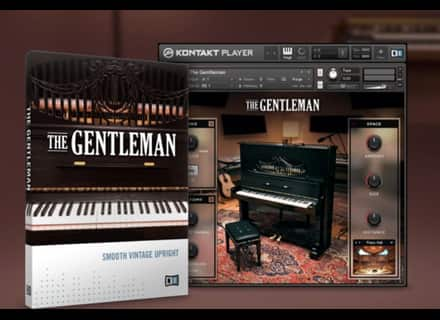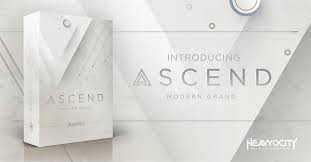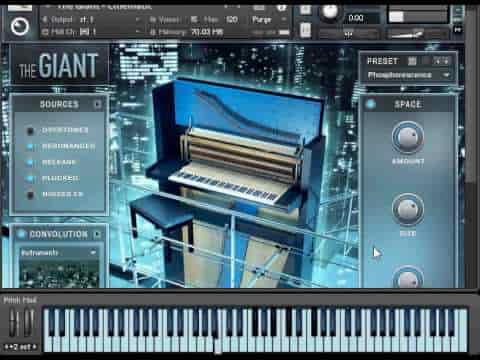The Best Piano VST Plugins
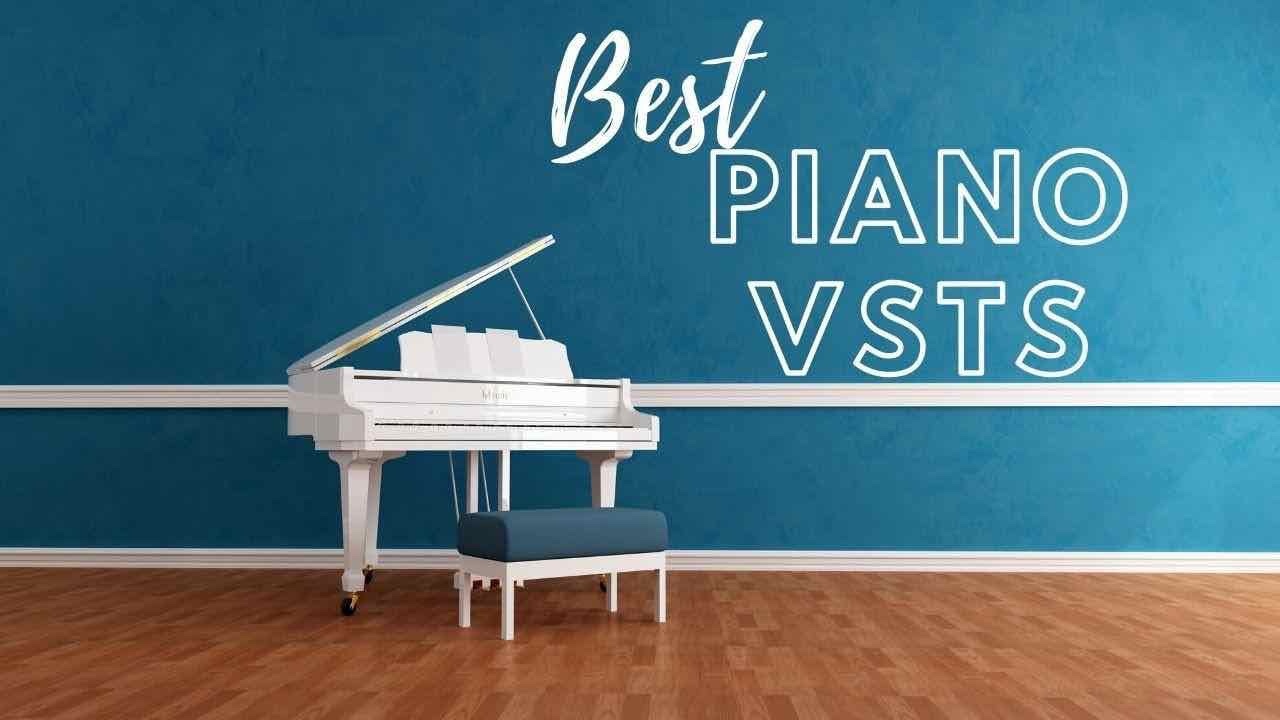
Are you frustrated with trying to get a realistic sounding piano on your computer? Or are you just looking for the best sounding pianos out there? In this article I've highlighted the best overall piano plugin package, the best grand piano VST, the best free piano VST, as well as some cool alternatives like felt pianos.
Note: some of the links below may be affiliate links, meaning that I receive a commission if you purchase through them.
In my opinion, a great virtual piano can be nearly indistinguishable from the real thing. Especially with the help of a few studio tricks and a good reverb to make your piano really sparkle and shine.
In this article you'll find:
- An Introduction to Piano VSTs
- The Best Piano VST 2024
- Keyscape Alternatives
- The Best Upright Piano VST
- The Best Grand Piano VSTs (for Classical, Modern, and Jazz)
- The Best Hybrid Piano Plugins
- The Best Piano Plugins for Sound Design
- The Best Free Piano VST
- Unique Piano Plugins
- FAQ
Introduction to Piano VST’s
Piano Virtual Studio Technology (VST) is a software technology that digitally reproduces the sound of a piano. The Piano VST is usually found as a plug-in hosted in a Digital Audio Workstation (DAW). The technology is most commonly used by connecting a musical instrument digital interface (MIDI) keyboard to a computer, and altering its effects using the software.
So, for example, a musician can choose a piano VST plug-in from a sample library (also known as a sampler) that resembles a Steinway grand piano. Then, the musician would play the virtual instrument using their MIDI keyboard or internal MIDI editor and the note pitches of the track will recreate the sound of a Steinway.
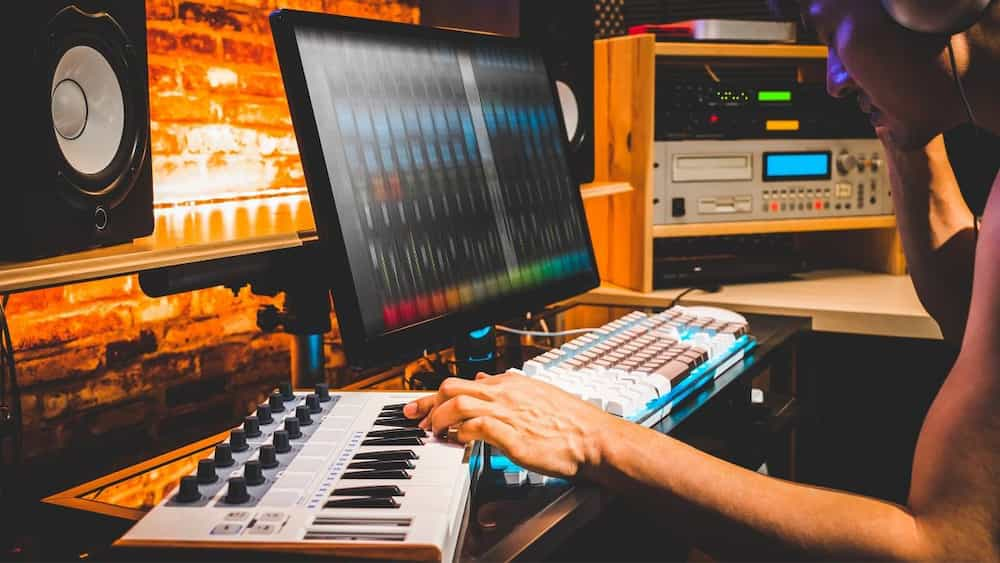
Overall, piano VST is extremely useful because they offer musicians a wide array of sound effects to meet their recording needs. It’s much more cost-effective to have a piece of software recreate the sound of a top class piano instead of purchasing or renting the piano itself. And it takes up less space!
Using a VST piano also offers the ability to edit notes within the software which saves musicians a lot of time. They are an affordable, convenient and flexible solution for any musician or studio.
Demos of the Best Keyscape Alternatives
You'll get a chance to read reviews about all of these pianos below. But sometimes it's best to actually hear the plugin in action. That's why I've put together this video of the best piano VSTs available as alternatives to Keyscape. Take a listen so you can find your perfect piano plugin!
Best Piano VST Plugin 2024
At the very top of the virtual instrument space, Spectrasonics is hands down one of the greatest companies out there. Spectrasonics Keyscape is the best piano VST and serves as the industry’s benchmark for virtual pianos.
Keyscape is a keyboardist’s dream because it gives the artist access to 36 keyboard types from flagship Yamahas, Wurlitzer’s and Rhodes to unique keyboards that were made over 100 years ago. There's a reason it's widely regarded as the best virtual piano.
No matter which plug-in you choose, each one has impeccable quality. Spectrasonics has a well-known reputation of paying meticulous attention to detail. The team finds and restores vintage instruments; and instead of cleaning up all of their iconic quirks and sounds, they work to include the full spectrum of the instrument’s personality by preserving their beautiful ‘imperfections’ which makes them so unique and interesting. It includes acoustic pianos, digital pianos, and electric pianos, sampled with tons of velocity layers for effortlessly subtle sound.
In addition to the wide array of instruments available, each instrument contains within it a set of variations depending on the musician’s preference. For example, a Yamaha has a suite of genres it can suit by choosing a classical, jazz, rock or cinematic setting.
Each of these patches can be further tweaked through Keyscape’s user friendly equalization (EQ) design and effects (FX) units. Lastly, Keyscape has a hybrid ‘duo’ sounds feature where the artist can combine two instruments to make something completely unique and never before heard.
Overall, Spectrasonics Keyscape offers incredible value and is absolutely the best piano VST on the market today. Keyscape is compatible as a plug-in for all major Digital Audio Workstations.
KeyScape Alternative Options
If Keyscape isn't what you're looking for, I've reviewed a bunch of other great alternatives to Keyscape below. Some of these sound as good as Keyscape (although they may not be as flexible), while others are significantly more affordable.
Best Keyscape Alternative - Arturia Piano V3
Arturia Piano V features 12 advanced physically modeled pianos instead of sampled pianos. This means the artist has access to various first-class instruments as well as complete control of components that are not possible with samples. Its sound quality is incredibly close to a real piano, because it is able to generate piano sounds that sample-based piano VSTs didn't record. Plus, it feels very natural to play in live performances due to all its nuance.
Some of the piano models to choose from are concert grand, studio grand, modern upright, jazz upright, metal grand and plucked grand. There are also a wide array of custom settings such as hammer hardness, stretch tuning and dynamic range. You have incredible flexibility in configuring your unique sound, from adjusting the pedal noise to the microphone position.
The Arturia Piano V is an extremely versatile tool for musicians regardless of genre as it features 88 factory presets. It’s also incredibly easy to use for MIDI mapping. Overall, the Arturia Piano V is a staple in physically modeled piano software with a wide variety of uses and applications across any genre and its small file size requires very little hard drive space.
If you're looking for an even better value, grab the Arutria V Collection, which bundles tons of immaculate emulations of classic instruments from Moog synths to Rhodes pianos!
Best Upright Piano VST & Best Value Piano
The Gentleman, by Native Instruments is a fantastic upright piano plugin included as part of Native Instruments' Komplete. It has a wonderful old-timey tone, because it was sampled from a piano built in 1908, but it features a huge dynamic range of sample choices.
The Gentleman also features a wide range of tonal controls. You can play it with the lid open or closed. You can dial in your perfect sound with by adjusting levels of pedals, damper, string, and hammer sounds. Plus it includes a huge host of builtin effects.
The Gentleman, which is part of Komplete 14 by Native Instruments, is probably the best value on this list, too. Komplete 14 includes a half-dozen totally unique pianos, some of which you won't find anywhere else. It also comes loaded with tons of other Kontak Instruments, like synthesizers, drum machines, samples and effects.
Best Overall Grand Piano VST
When it comes to the overall sound of a grand piano usable in everything from jazz ballads to rock operas, you can't go wrong with a Steinway Model D Grand Concert Piano. XLN Audio's Addictive Keys Studio Grand absolutely nails this classic sound.
The piano was meticulously recorded in a phenomenal studio of the Swedish Broadcasting Corporation, using an array of high quality, vintage microphones and preamps. And the results are astounding.
While some producers may fret at the limited tweakability of the piano (you can switch between 6 different microphone positions), others will probably rejoice at the simplicity. After all, you can't really endlessly tweak all the parameters of real piano!
So if you just want to sit down and play something that sounds amazing and inspiring out of the box, the Addictive Keys: Studio Grand is probably your choice!
Best Classical Grand Piano VST
When it comes specifically to grand piano VST, the Chroma Grand Piano SonuScore is one of the best of the best. For starters, Sonuscore used the Yamaha C3 Concert Grand piano for this VST.
The C3 Concert Grand is one of the most popular grand pianos ever made used by countless professional musicians; and for good reason! The C3 Concert Grand is hand-built by an experienced and perfectionist Yamaha team.
The versatility this piano offers is second to none, as it is capable of handing the rumble of a full symphony orchestra to expressing a gentle pianissimo style.
The second reason this VST is that it is full of customization options, from mic position to dynamics.
Lastly, artists have the unique option to choose where the listener can experience the sound from—the player setting, the contemporary setting and the classic setting. The player setting makes the listener feel as though they are right behind the piano or sitting on the bench listening to the track. With 23 velocity layers each featuring 8 round robins, your playing will never feel stale.
The contemporary setting emphasizes the Yamaha’s hammers which adds an astute percussive element, while the classic option captures multiple microphone perspectives which blends with the ambiance of the room to deliver a jaw-dropping sound.
Overall, the combination of award-winning engineers, top of the line microphones and the best recording space in the world makes the Chroma Grand Piano VST among the best grand piano VST in the world.
Best Piano for Jazz - Piano in Blue
Cinesamples Piano In Blue is a meticulously sampled grand piano library that captures the iconic sound of the Steinway D Concert Grand Piano, famously used in Miles Davis' "Kind of Blue" and Glenn Gould's "Goldberg Variations." This historic instrument's essence is now accessible through the free Native Instruments Kontakt Player 6.6.1 and Komplete Kontrol, offering a highly playable virtual grand piano experience.
In homage to the legendary recordings, Cinesamples' engineering approach included setting up three sets of microphones in a manner reflective of the original Columbia Records setup. This included the M49 microphones with stereo placement, along with two additional pairs placed progressively further away. Each microphone was recorded through two signal chains: one clean, via a Neve console, and the other through a historic tape machine. This dual approach allows users to explore the distinctive coloration of the tape signal, with both options available for flexibility. A Noise knob is also included to manage the level of tape hiss, ensuring the authentic sound texture can be adjusted to taste.
The Steinway D was sampled chromatically, capturing the unique timbral variations of each key to ensure a true representation of the instrument's character. This painstaking process, performed by hand, highlights the nuanced differences in sound across the keyboard, offering an unparalleled level of detail and realism in a sampled piano.
Through every stage of recording and production, careful consideration was given to best capture the essence of this remarkable instrument, making Piano In Blue a valuable asset for musicians and producers seeking an authentic grand piano sound.
Heavyocity Ascend: Modern Grand
Another great option is Heavyocity Ascend: Modern Grand. This digital piano was used by recording a multi-sampled staple, a 9-foot Concert D grand piano. It was chosen by highly professional film score engineer, Satoshi Noguchi, due to its clarity and vibrant sound. The Concert D was recorded painstakingly in a top quality New York City studio, and is certainly one of the finest gran piano VSTs available.
Heavocity embellished the sound library with an array of hammers, brushes, twine and chains. The software also features a slew of built-in effects, ambience and special processors. Ascend’s trademark Three Point Mixer allows articulations to be controlled easily with a modulation wheel or preset automations. An artist can choose from a vast library of preset patches to choose from to jumpstart their creativity.
Ascend: Modern Grand is a fantastic alternative that features a highly sought after Concert D grand piano with a wide range of flexibility when it comes to articulation and modulations.
Best VST Piano for Sound Design: Arturia Augmented Grand Piano
Arturia's Augmented GRAND PIANO offers an expansive range of premium piano sounds designed for cinematic scoring, library composition, immersive game soundtracks, and contemporary DAW production, providing an intuitive and extraordinary piano experience that goes beyond traditional virtual instruments. This innovative tool transforms the classic sound of a grand piano into new, uncharted sonic territories. From expansive granular sustains to intricately modified felt tones, it enables composers and producers to explore as creatively as they wish, delivering theatrical grandeur, cinematic textures, evolving metallic sounds, and unique hybrid effects to suit any musical style.
The software allows for deep customization of piano timbres through two distinct layers, each with two sound sources. This setup gives users the ability to craft complex textures by mixing samples and synthesized sounds.
The Augmented GRAND PIANO animates tracks with a dynamic range of sounds that oscillate between the familiar and the avant-garde, the acoustic and the synthetic, the pure and the transformed. A standout feature, the Morph control, simplifies the process of blending sound layers and adjusting various sound aspects with a single gesture.
While Augmented GRAND PIANO is designed to quickly deliver engaging piano sounds, it also includes an advanced panel for those looking to dive deeper into sound design. This feature offers complex modulation options, smart arpeggiation, and detailed adjustments of sound layers, catering to projects that demand intricate sonic manipulation.
Best Hybrid Scoring Piano: Revelation Scoring Grand
Revelation Scoring Grand offers a transformative tool for composers, musicians, and sound designers of all levels, blending unparalleled musicality with unique storytelling capabilities. It serves as a source of inspiration, enabling the creation of captivating musical pieces with its vast array of sounds. From sublime underscores and dazzling hybrid keys to complex rhythms and rich piano textures, this instrument is equipped with a variety of expressive solo grand pianos to enhance any composition.
Breaking away from conventional methods, Revelation Scoring Grand merges acoustic and synthetic sounds, allowing for the creation of fully realized musical cues and compositions with just a single preset. At its core lies a meticulously multi-sampled Steinway Grand Piano (Model O), offering four microphone perspectives (sub, near, mid, far) to achieve a diverse mix of tones and timbres. This enables more tonal control than one might find in a sophisticated live session, including the ability to introduce realistic mechanical acoustics through Pedal, Felt, and Mechanism Release features.
Moreover, Revelation introduces a "Power Trio" of sampled instrument layers, making it easy to blend up to three unique sounds from a selection of 50 sampled instruments. This allows for the crafting of eloquent textures and timbres, or more avant-garde hybrid keys, pads, and rhythmic patterns.
Each layer comes with sound shaping tools like ADSR, Delay, Reverb, EQ, and an innovative LFO design, offering extensive control for creating nuanced soundscapes. Whether used in conjunction with the grand piano or standing alone, these layers are poised to take center stage in any musical narrative.
Native Instruments - The Giant
The Giant (also part of the Komplete bundle) is a very different beast, created by Native Instruments. Based on by the Klavins Piano Model 370i, it's the most massive upright piano in the world if you haven't seen it.
The Giants has two emotions, day and night. All functionality can be seen in the user interface which shows the panorama of the city (day or night) seen from the top of the building.
The interface has three main components: control, noise, location, and physics. The voice section has a simple soft/hard dial for color change and an XXL button that takes care of all the dynamics when open. Space deals with reverb and the anatomy controlling dynamic range and mechanical sounds.
For huge, other worldly sounds, it's hard to beat the giant!
Best Electro-Acoustic Piano: Arturia CP-70
Arturia's slick virtual instrument revitalizes the Yamaha CP-70, blending multilayered sampling with expert circuit modeling to authentically replicate its expressive character for contemporary use. It offers advanced tonality control and a full pedal rig, capturing the essence of the CP-70's iconic sound and adaptability. Designed for both keyboardists and producers, it combines the nostalgic feel of the '70s and '80s with modern effects for creative expansion.
Launched in 1976, the CP-70 was famed for its portability, vivid sound, and tactile responsiveness, endearing it to a wide array of artists and ensuring its prominence in live performances. This virtual rendition not only honors the CP-70's historic legacy but also enhances it with extensive customization options, allowing users to personalize the sound further and explore new musical possibilities.
Conclusion
Did I miss any great options for Piano Plugins? If so let me know your favorite in the comments below!
That said, I think you'll be happy with any of these virtual pianos. I just depends on what you're looking for. Hopefully this review highlighted some of the differences between all of the great sounding pianos out there! Of course, even the best piano plugin won't do much if you don't know how to mix it. That's why I put together this free epic guide on getting pianos to sound life-like and realistic.
And if you're looking to expand beyond the beautiful sounds of the traditional piano, you should check out my recommendations for the best Rhodes VST plugins for the smooth sounds of the best electric piano.
The Best Free Piano VST Plugins
If an artist is unable to pay the premium for the best two piano VST’s discussed, Spitfire LABS has a variety of unique, free piano VST options. Spitfire released free plug-ins in 2018 called LABS which stands for Let's All Be Something.
The free plugins within LABS are compatible with all Digital Audio Workstations and features plenty of different samples including soft pianos, a Wurlitzer, strings, drums trumpets and even bells. With its range of sounds and growing sample set, Spitfire LABS is a great Keyscape free alternative. Every music producer should consider grabbing LABs, because there is such a wealth of free, weird instruments included.
Spitfire describes the strings sample, “Fourteen of London's best string players, recorded at Spitfire HQ by engineer Harry Wilson. This ensemble was captured using a wide range of microphones including a vintage BBC AXB1.” Furthermore, the user interface for LABS is intuitive and simple. Controls, knobs and sliders are used for various modes of expression and are fully customizable.
LABS is very simple to install. All that is required is a name and email to receive the how-to guide on for installing the Spitfire Audio App. In addition, there are tutorial videos throughout the website for how to activate the plug-ins in various DAWs.
Each sample sound has a tutorial on how to use each plug-in effectively. Best of all, not only does Spitfire Labs permit artists to use their free software for studio recording purposes, they proactively encourage it! Even if you end up buying some piano plugins, you should still check out the free piano VST options offered by Spitfire - they do some really unique things!
Best Piano VST Plugins FAQ
The Two Types of Piano VST – Modeled Vs. Sampled
A sample piano VST is recorded directly from an actual piano while a modeled piano VST is digitally produced through the use of algorithms that sound very similar to the piano.
The sample piano VST is more commonly used since the authentic sound of say, a Steinway or a Rhodes, is much more appealing to a musician than a digitally crafted version.
That said, Arturia's Piano V has convinced me that a modeled piano can sound amazing, and feel inspiring to play. However, the main advantage modeled piano VST has is it uses much less hard drive space while sounding almost as good in most cases. They are also much more customizable.
Do These Pianos Require Kontakt? What is Kontakt?
Kontakt has become the industry-standard software sampler. Digital instruments are created by using its audio engine and modular architecture. Many DAWs create instruments within Kontakt’s framework, therefore a musician will need a version of Kontakt in order to use the Native Instruments' pianos. Most of the others do not require Kontakt.
How to Use a Piano VST?
Virtual Studio Technology allows musicians to use a wide array of digital instruments and effects within their projects. VST is embedded within DAW software as plug-ins.
First, the musician would add a VST plug-in to a track within their project. Once a track is selected, the next step would be to select a VST preset. It is up to the artist to further customize the preset with the VST editor or not.
Finally, the artist would compose their work by creating a MIDI part by either using an external MIDI keyboard or the internal MIDI editor. This track will now feature the piano VST preset which was chosen!
Does these Pianos require additional Software?
Most Piano VSTs require hosting within DAW software, like Logic or FL Studio.
How Do You play a piano VST with a keyboard?
Once the VST plug-in is chosen for a given track, the artist can choose to add an external device from the DAW option menu. This can be an instrument or even a computer keyboard and assign the piano note values within the DAW. You'll get the best results from your plugin instruments with a high-quality midi controller, preferably one with weighted keys and aftertouch.
How do you make a piano VST sound better?
Check out these tips for EQing piano!
From a Frustrated Producer in a Ragtag Bedroom Studio to Major Placements on TV Earning $1,000s!
My name is Evan, and I've been making music since around 3rd grade. I'm from San Diego, California, but I've lived in Washington, DC for the last 20 years.
While I still have a full-time day job, I have created systems that have allowed me to produce dozens of songs a year in my spare time.
My songs have been on Netflix, TV shows like the 90 Day Fiance, an award-winning indie film, and NPR’s “All Thing Considered.” They've also been streamed millions of times.
In addition to being a music producer, I am passionate about teaching people how they can make professional-sounding music and earn money licensing it, all in their spare time.
Thousands of musicians, like yourself, have trusted me to guide their musical journey. My YouTube videos have been watched nearly a million times. And my story has been in Forbes, Side Hustle Nation, and the Side Hustle School.
